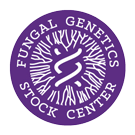Strain: Neurospora crassa
FGSC #221
Reporting Genes: T(IV;V)R2355 ylo-1 wc
Species: crassa
Allele: R2355;Y30539y;P829
Alternate Strain Number: 45046
Depositor: DDP
Linkage Group: IVR;VR
Mating Type: A
Genes

Reporting Genes: T(IV;V)R2355 ylo-1 wc
Species: crassa
Allele: R2355;Y30539y;P829
Alternate Strain Number: 45046
Depositor: DDP
Linkage Group: IVR;VR
Mating Type: A
